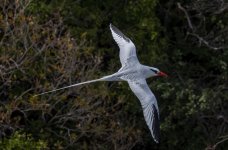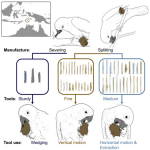There was a nature programme on telly the other day which, to be honest, we weren't really watching, but then a bit came on about a bird called (I think) an eagle hawk, or possibly hawk eagle, and our ears do always prick up when it's something about a bird as opposed to yet another of those countless shows about lions - and, in fact, if I see all the bears gathering where the salmon spawn after swimming upriver again, I swear I'll do time, but I digress - and this bird lives somewhere and um, every day or possibly once a decade I dunno I missed the explanation, this enormous horde of bats comes out of their massive cave or down from the moon or the trees or wherever they live that's not the point and this hawk eagle thing is ready for them and it is perfectly evolved to catch up to them and it has weirdly long legs so it can basically stretch out and pluck a bat out of the air with one talon, maybe it can get two at a time but that does seem unlikely cos it would have to fly chasing them slowed by a bat in one claw. But then again there are so many bats it can hardly miss so who knows.
But what was really interesting was these hornbills which look like this

And which are just chilling in the trees nearby eating fruit as they have evolved to do, but they see all these bats flying around and the buzzard falcon chasing them and they start getting sort of interested and you can almost see the cogs spinning and they are thinking "I wonder what they taste like? Maybe I can catch one" and then they go flying into the humongous bat cloud but compared to the real hunters who are seemingly snatching bats almost at will, they are comically unaerodynamic and in total contrast to the raptor their legs are short and stubby and of course they wouldn't be able to grab with them anyway.... but but, somehow - and sadly I think they missed the bit where it actually caught one - you see the hornbill with a bat in its mouth and it sort of gulps it down like if you've ever seen that footage of a pelican in London eating a pigeon, which (the horrnbill not the pelican) was apparently completely unknown behaviour that had never been known about before, never mind been caught on camera. Fascinating and weird.



